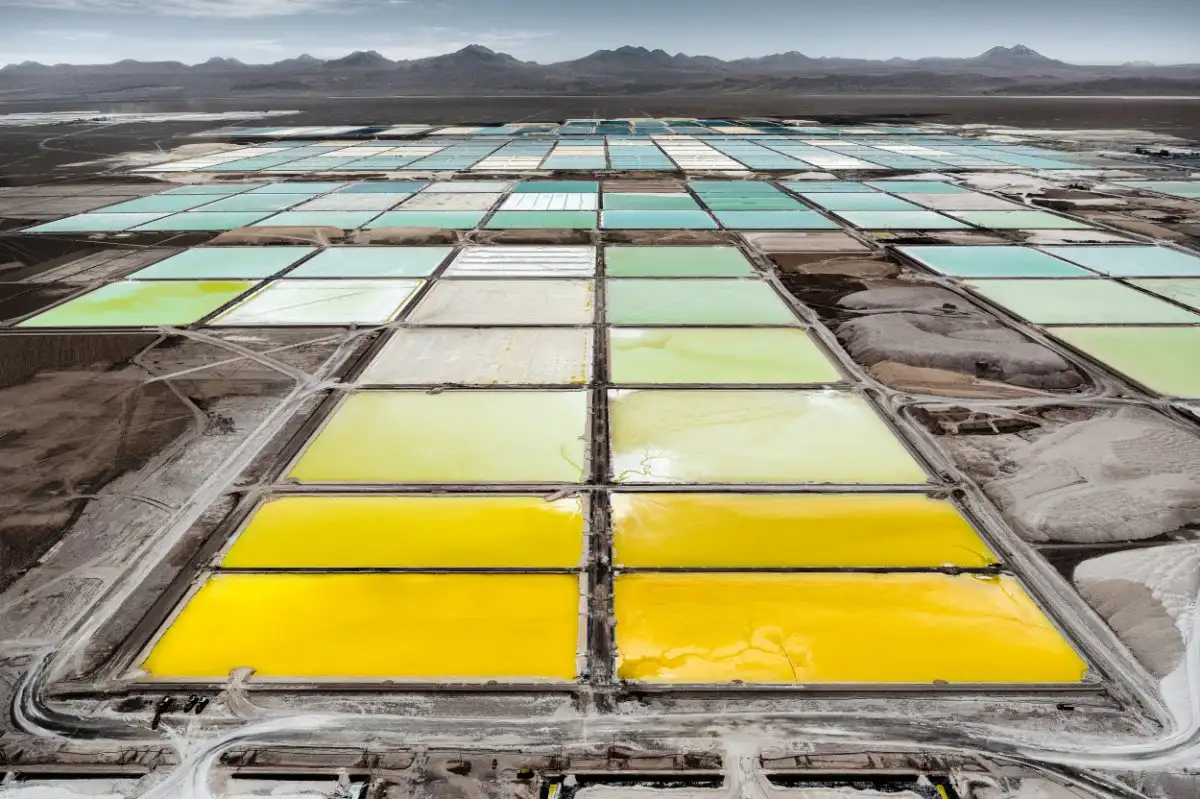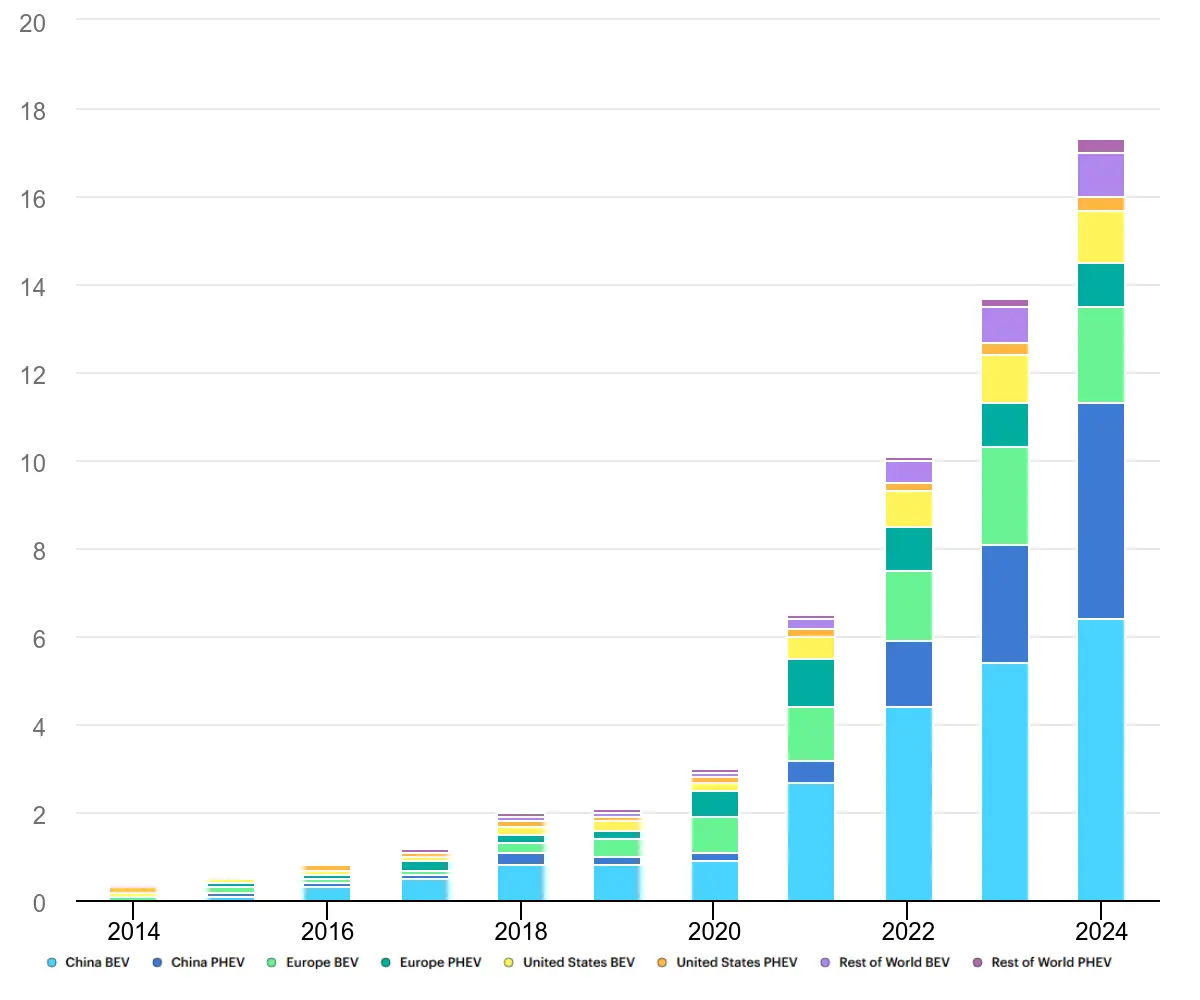
Are expensive EVs are actually environmentally friendly or are they a mega-corporate marketing scam?
Key takeaway:
The environmental impact of electric vehicles extends far beyond their zero-emission operation. While EVs are marketed as a green alternative to conventional vehicles, their production process involves extensive mining operations for rare earth metals, significant energy consumption, and potential environmental degradation.
The global push toward electric vehicles (EVs) as a solution to climate change may be creating unintended environmental consequences, according to new research and industry analysis. While EVs promise zero tailpipe emissions, the environmental impact of their production – particularly battery manufacturing – presents a complex challenge to their green credentials.
“The environmental impact of EV production is the elephant in the room that nobody wants to discuss,” says Dr. Sarah Henderson, Environmental Science Professor at MIT. “We’re essentially trading one form of environmental damage for another.”
A comprehensive analysis of EV battery production reveals disturbing statistics: manufacturing a single EV battery requires mining approximately 250 tons of earth to extract the necessary raw materials. This process involves massive mining operations in some of the world’s most environmentally sensitive areas.
Raw Material Requirements for Single EV Battery Production:
| Material | Required Amount | Environmental Impact |
|---|---|---|
| Lithium Rock | 12 tons | Groundwater depletion, ecosystem disruption |
| Cobalt Minerals | 5 tons | Soil contamination, habitat destruction |
| Nickel Ore | 3 tons | Water pollution, acid rain contribution |
| Copper Ore | 12 tons | Landscape degradation, toxic waste |
“The mining operations required for these materials are energy-intensive and often environmentally destructive,” explains Michael Chen, senior analyst at Global Resource Watch. “The heavy machinery used in these operations runs on diesel fuel, creating significant carbon emissions before an EV ever hits the road.”
Environmental Impact Timeline:
| Year | Stage | Environmental Effect |
|---|---|---|
| 1-3 | Initial Production | High carbon debt from manufacturing |
| 4-7 | Usage Period | Gradual offset of initial carbon debt |
| 7-10 | Carbon Neutral Period | Net positive environmental impact |
| 10+ | Battery Replacement | Return to carbon debt if replaced |
In the Atacama Desert of Chile, where much of the world’s lithium is extracted, mining operations consume massive amounts of groundwater, threatening local ecosystems and communities. Similar concerns exist in the Democratic Republic of Congo, where 70% of the world’s cobalt is mined, often under questionable environmental and labor conditions.

Industry experts estimate that an EV must be driven for approximately seven years before it reaches carbon neutrality compared to a conventional vehicle. This calculation factors in the energy used in raw material extraction, manufacturing processes, battery production, and transportation of materials and finished vehicles.
“We’re seeing a carbon debt that takes years to overcome,” says Jennifer Martinez, automotive sustainability consultant. “With battery life expectancy averaging 10 years, the net environmental benefit window is relatively narrow.”
Energy Source Impact on EV Environmental Benefits:
| Power Source | Environmental Benefit Rating | Notes |
|---|---|---|
| Solar/Wind | High | Best case scenario |
| Nuclear | Medium-High | Consistent power, waste concerns |
| Natural Gas | Medium | Better than coal, still fossil fuel |
| Coal | Low | May exceed gasoline vehicle emissions |
The production of EV batteries requires significant energy input and creates substantial waste. Current manufacturing processes consume approximately 50 kWh of energy per kWh of battery capacity, generate hazardous chemical byproducts, and require extensive water usage for cooling and processing.
Major automotive manufacturers and battery producers are investing in more sustainable production methods. Tesla and Volkswagen have announced initiatives to develop closed-loop recycling programs, reduce reliance on controversial raw materials, and improve battery longevity and efficiency.
“We’re seeing promising developments in solid-state batteries and alternative materials,” says Dr. Lisa Wong, Chief Technology Officer at Advanced Battery Solutions. “These could significantly reduce the environmental impact of EV production within the next decade.”
Factors for Consumer Consideration:
| Factor | Importance | Impact on Environmental Benefit |
|---|---|---|
| Grid Energy Source | Critical | Determines charging emissions |
| Ownership Duration | High | Affects carbon offset timeline |
| Current Vehicle Age | Medium | Influences replacement timing |
| Local Infrastructure | Medium | Affects charging efficiency |
While EVs represent an important step toward reducing urban air pollution and transportation-related emissions, their environmental impact requires careful consideration. Industry leaders and policymakers must address sustainable mining practices, clean energy sources for manufacturing, efficient recycling programs, and battery technology improvements.
“The solution isn’t to abandon EVs,” concludes Dr. Henderson, “but to acknowledge their current limitations while working toward truly sustainable transportation solutions.”
Meanwhile global EV car sales continue to rise

The Chinese Approach to Lithium Extraction
China is aggressively tackling the environmental and supply challenges posed by lithium extraction, a critical component in the global push for electric vehicles and renewable energy. The country has invested heavily in technological innovations, including developing solar-powered methods to extract lithium from seawater-an approach that could reduce reliance on water-intensive mining and evaporation ponds. Additionally, China has boosted its domestic lithium reserves through extensive exploration across regions like Sichuan and Qinghai, aiming to secure a stable supply amid rising global demand.
At the same time, Chinese authorities are cracking down on pollution linked to lithium processing. Following incidents such as toxic spills in Yichun, regulators have tightened environmental oversight, enforcing stricter waste management and emissions standards. New government guidelines now mandate high recovery rates for lithium in battery recycling, pushing companies to adopt cleaner practices and improve the circular economy. These measures reflect Beijing’s growing commitment to balancing industrial growth with environmental protection.
Final Thoughts
This complex reality challenges both consumers and policymakers to look beyond marketing claims and consider the full environmental impact of transportation choices. As technology evolves and manufacturing processes improve, the environmental equation for EVs may become more favorable, but for now, the green credentials of electric vehicles remain a matter of ongoing debate.
References:
Devils in the Machine – Driving an Electric Car Is Fake Environmentalism, Global Research, January 06, 2025
Chinese scientists extract lithium from seawater, SCMP, 27 Sep 2024
China releases proposed standards for battery recycling, Rho Motion, 20 August 2024
Lithium Extraction: Water Shortages and Mining Challenges, Save Then Water, April 30, 2025
YOU MIGHT ALSO LIKE: Unmasking the Dark Side of Solar Panels







